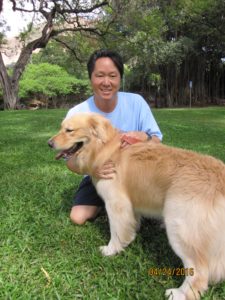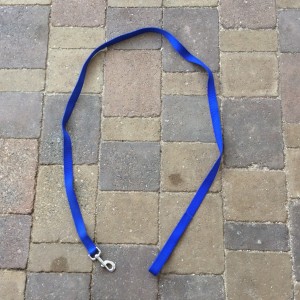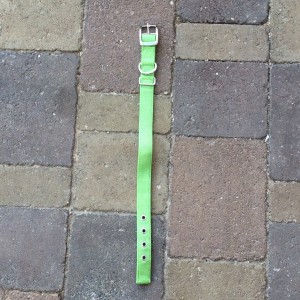Here is a question from a young adult dog owner:
“I found your website on google and I have a question about crate training.
My puppy is 1 year old and she’s a great dog. The only problem is, I work a lot and she’s not able to be out of her crate while I’m at work. In a general sense, is this abusive toward the dog? I’m in a position where financially, I need to be looking into getting a second job, but I don’t want to do that at the risk of crating her seven days a week for 8-10 hours a day. She’s only in her crate while I’m at work or not in the house, and besides that she’s always out and being active. I’m just worried that I’m not giving her the best life possible by crating her at all, and I’m not sure what the best option at this point would be for her.
Any help you can offer would be greatly appreciated.
Thank you!
Arianna”
This is a common problem that many pet owners have between balancing their time at work and caring for their pet; especially single adults that are caring for a dog on their own. I hope that some people that are considering getting a pet, will read this article to consider the responsibilities of pet ownership.
Caring for a puppy or young dog takes a lot of time. Dogs need attention and exercise.
For a dog to be happy, they need to spend time around their owner. Dogs need to receive daily walks. At the minimum, a dog needs two walks a day. Each walk should be thirty minutes minimum. Some athletic breeds will need three walks a day / thirty minutes minimum each walk.
Are you neglecting your dog by keeping your dog in a crate for eight hours a day? Yes, you are! This is not not a humane way to treat a dog. It will lead towards behavior problems. And the problems that it brings on is why humane societies and shelters are loaded with dogs. Some pet owners do not understand that dog ownership means walking their dog.
Maybe you have rescued a dog from a shelter. And in that case, you have improved the dog’s life from 24 hours a day in a cage to 10 hours a day in a cage. If you have rescued a dog from a shelter, whatever you are doing is probably an improvement to the life it had in the shelter. Nonetheless, you should be looking for more opportunities to get your young dog out of the crate. The maximum amount of time that a dog should continuously be in a crate is four hours. And why is the dog in a crate at all? Because she tears things up in the home when you are away at work? That means that the dog needs more activity. The dog needs more walks. Also, doing a dog training session with a dog trainer will further teach the dog how to productively expend the dog’s energy so she won’t destroy the furniture. The essential issue addressed by Arianna at the top of this article is she is busy with work and she doesn’t have enough time to exercise her dog. There are solutions. Some are paid solutions and some options do not require exceeding your budget.
Inexpensive solutions for getting your dog more attention and exercise: Co-share the dog.
The inexpensive solution is to look for ways to share your dog with other people. Ask your friends and family if they can keep your dog while you are away at work. Place an ad in craigslist looking for someone to spend time with your dog. Have you heard of people exchanging homes so that they can travel to new locations without paying for expensive hotels? Its similar to that. Ideally, you want to get to know the person who will be sharing your dog. Spend time with that person. Go on dog walks together with that co-owner. Hang out at the cafe together. Try to become friends before you hand over the leash. Be flexible with your time to hang out when the other person is available. This may involve taking some time off work. And that tells you that its a good match for your dog. Because this person is available when you are typically working. Yes, it will take time to do this, but it is worth the time. Your dog needs this. The most important criteria in finding a co-owner for your dog: will that person take the dog out on walks daily and often.
Another way to co-share a dog: go to the humane society and get a vest that says “adopt me” (maybe the wording is slightly different but the meaning is the same) and put it on your dog when you take her for walks. Walk around your neighborhood with the “adopt me” vest on your dog. This will be a conversation starter. Tell them that you are looking for someone that wants to co-share the dog and would they consider keeping your dog while you are busy? This starts the discussion. What days / hours could they take care of the dog? Is that person open to the concept of co-sharing a dog together or does that person want sole possession? Not everyone is going to fit your criteria but you’ve got to search for that right match. Finding someone in your neighborhood would be convenient, and if that doesn’t work out, then, consider taking the dog to hiking trails and open space parks with the “adopt me” vest. Someone that is already in a park or on a hiking trail is a good candidate. Occasionally, take time off from work (even a one or two hour break) to walk the dog ( with the “adopt me” vest) at times where you might run into that special someone that is free when you are usually working.
Another option is make your own vest that says “rent me.” It’s a joke and a conversation starter to find a person interested in walking your dog. Remember, the easiest way to strike up a conversation with a stranger is when a person is walking a dog. Tell this to your single friends to encourage them to borrow your dog. And keep this is in mind as you are prospecting new co-owners. What you are doing is searching for a new friend. Its similar to finding a new boyfriend (or girlfriend). Put yourself out there.
If you were thinking of getting a dog, but now you are reconsidering because you don’t have enough time to walk the dog everyday, then consider placing an ad in https://www.craigslist.org (in the pets section or the activities section) offering to care for someone else’s pet a few days a week. You are in the driver’s seat. You can ask for pictures and select the dog you like best because this service is very much in demand. If you are not asking for money, you can probably ask that the owner drop off and pick up their dog at your place. Just keep in mind, that you want to create a feeling of trustworthiness with the other person.
Should I get a second dog to entertain my first dog?
I recommend seeking a human friend (paid or unpaid) for your pet more than getting a second dog to entertain your dog. If you are considering getting a second dog because your first dog has too much energy. This is a bad reason for getting a second dog. In these cases, the dogs frequently play fight with one another. The owner thinks the play fighting is a good way to get out the excess energy of the dogs, but more often the “play fighting” leads to real fighting. Eventually, the dogs begin to fight for real and then the owner has to separate the house because the dogs do not get along. This defeats the very reason for getting a second dog!
Another option when the owner is away at work is sending your dog to doggie day care while you are at work. Before you do this, watch how the dogs interact in the facility. Choose a doggie day care facility that doesn’t encourage the dogs to play fight in the facility. Dogs in a doggie day care facility should be playing with toys, not “play biting” or wrestling with other dogs. It’s okay if more than one dog is biting the same toy. As I mentioned in a previous paragraph, “play fighting” leads to real fighting. So dogs that play fight are likely to become dog-to-dog aggressive.
What is better: hiring a dog walker or taking my dog to doggie day care?
Another option for owners is to hire a dog walker. I prefer hiring a dog walker than taking a dog to doggie day care because the most important aspect to canine well-being is getting outside into the world of nature. Furthermore, I prefer the dog walker that only walks your dog versus the dog walker that picks up a van load of dogs and takes them walking in a pack. Proper dog ownership involves separating dogs from other dogs. This builds more compliance with humans. Have you ever seen a guide dog for a blind person in a dog park wrestling with other dogs? That’s because its not good for general obedience. The best places to take a dog are on hiking trails, open space fields, open space parks. Stay away from dog parks unless your dog is the only dog in the fenced in area. In general, don’t rely on the dog park. Pick up the leash and explore the world outside of fences and cages. That is what dogs really want. A hiking trail or open field on a leash is a million times better than the best dog park.
Dog ownership takes time and energy. The main aspect to responsible dog ownership is daily walking and spending time with your pet. As a dog trainer, I’ve offered you choices for how to get your dog out on the leash. If you do not have time to walk the dog daily, then you have to search for ways to get your dog on walks. One way is to to hire someone to exercise your dog when you cannot. Dog ownership can be expensive. Or it is something to be shared among several people. A family can share the responsibilities of dog ownership among the family members. For single adults that are caring for a pet alone, there is another choice that doesn’t require more money. It involves you reaching out into the community and trusting another fellow human being. It’s worth the effort. It’s worth the risk. Do it.






